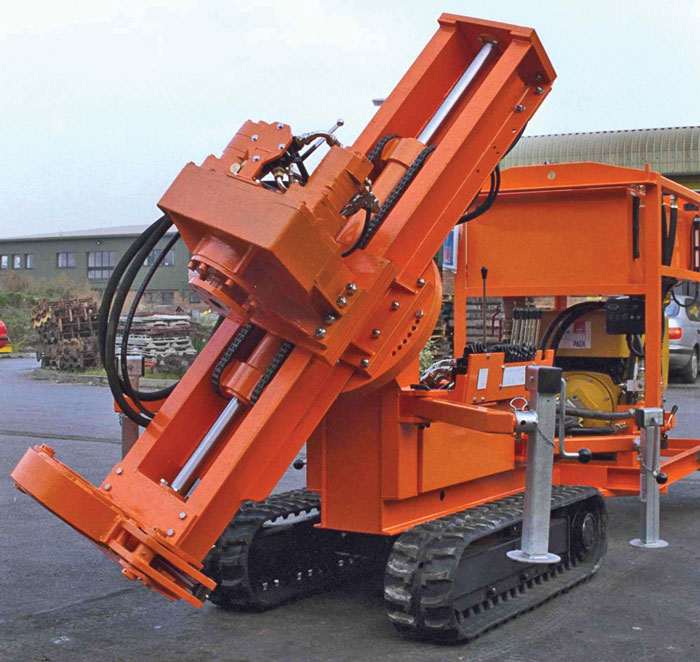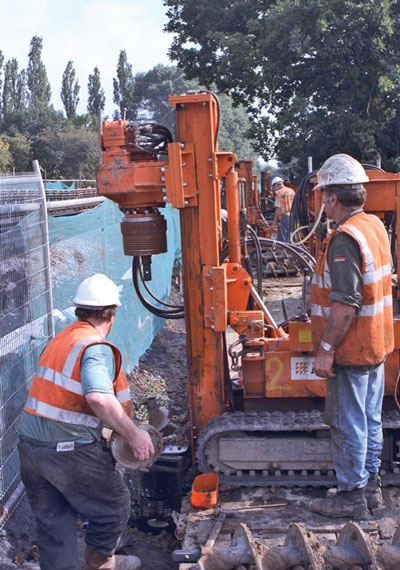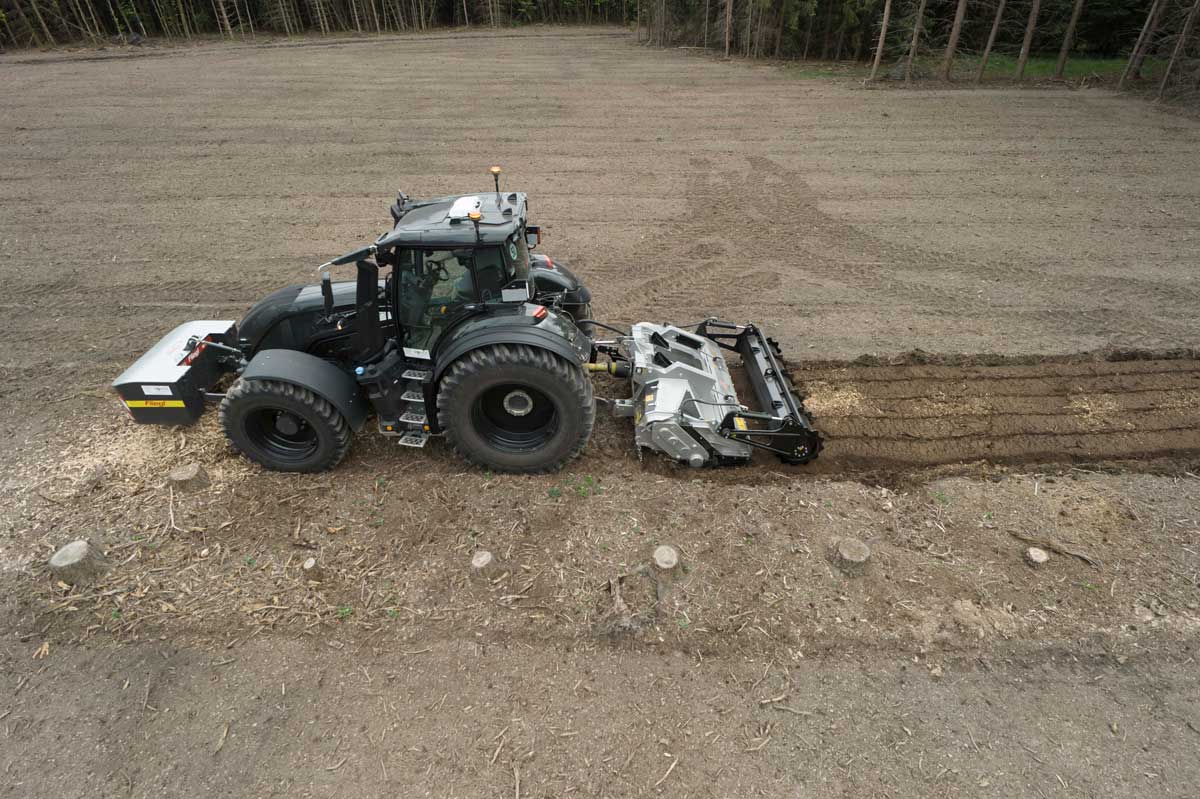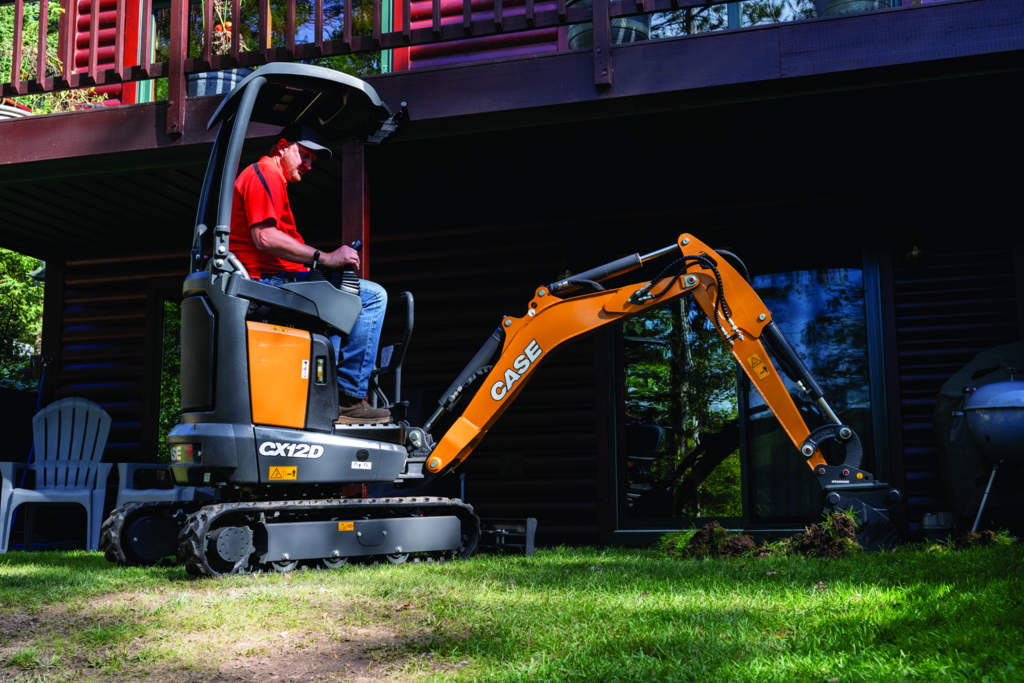New Drilling Opportunities
 The early twentieth century saw cities explode with growth — buildings became higher and heavier than ever before. To provide adequate structural support, foundations now had to extend below medium and soft clays to firmer material and bedrock. Obviously, to reach these greater depths a more efficient method, other than digging foundations by hand, was needed. From augers driven by primitive power sources came the birth of small auger drill rigs mounted on trucks. Today, massive drill rigs are capable of drilling large diameter bores hundreds of feet deep.
The early twentieth century saw cities explode with growth — buildings became higher and heavier than ever before. To provide adequate structural support, foundations now had to extend below medium and soft clays to firmer material and bedrock. Obviously, to reach these greater depths a more efficient method, other than digging foundations by hand, was needed. From augers driven by primitive power sources came the birth of small auger drill rigs mounted on trucks. Today, massive drill rigs are capable of drilling large diameter bores hundreds of feet deep.
Within the deep foundation industry is a vast sector known as micropile drilling. Micropiles, constructed with high-strength cement grout and often steel casing for reinforcement, generally have a diameter in the range of 3 to 12 in. There are several different micropile drilling methods that can be implemented depending on the load to be supported, the capacity of the ground material and the designed diameter of the pile.
“Straight” shafts are drilled though soft soils to firmer supporting material such as bedrock. A “belled” shaft is where an under-reaming tool is used to expand the base of the shaft which increases the base area and load carrying capacity of the pile without increasing the shaft diameter. “Socketed” shafts, which are similar to straight shafts, are drilled deeper into the bedrock to a predetermined depth providing greater load capacity. While other variations exist, the three principal loads that must be supported remain consistent: vertical or compression load, uplift or tension load (caused by wind or earthquake) and lateral load such as used in retaining wall structures.
Micropile applications include underpinning existing structures, supporting new loads in dense urban areas, preventing structural settlement and excavation support in confined spaces. Compact drilling equipment is absolutely essential to operate on these restricted access and low headroom drill sites, enabling structural improvements with minimal disruption to existing infrastructure.
On many projects, large rigs cannot physically access the drill site or raise the mast. In contrast, some compact track-mounted drills have width adjustable crawler tracks that narrow to as little as 34 in. wide, enabling the rig to drive through a standard-size door way, down a flight of stairs, around a tight corner and into a low headroom basement. The separate power unit can be connected up to 200 ft away with umbilical hydraulic hose extensions. Amazingly, these restricted access drills can be equipped with up to 10,000 ft-lbs of rotary torque — specs equivalent to many large truck rigs.

Loose materials and overburden can be drilled effectively with augers provided that the drill is equipped with sufficient rotary torque. Torque is the turning force applied to the drill string. The denser the material being drilled, the larger the diameter of the bore and the deeper the hole is, the more torque required. When drilling in rock formations, a DTH (down-the-hole) hammer is generally the most efficient method. DTH hammer drilling requires less torque and down pressure than auger drilling as an air compressor is providing most of the force behind the hammer blows.
Some contractors bidding on solar field installations or other foundation and excavating projects subcontract out the drilling or turn down certain projects altogether because they just don’t have the proper drilling equipment. While they often own and operate compact equipment such as skid steers, excavators and the like, professional grade drilling equipment can seem like a big investment. A cost-effective solution is a drilling mast attachment. Along with compact drill rigs, drilling mast attachments also limit disruption to existing infrastructure, operate in confined spaces and have long been used for construction and foundation drilling applications.
These attachments transform compact equipment such as skid steers and excavators into powerful and versatile drilling units. As the mast and rotation head are powered by the diesel engine on the carrier machine, capital costs are reduced substantially when compared to a dedicated drill rig if a suitable carrier machine is already owned. Quick-attach mechanisms mounted between the mast and the carrier machine ensure simple attachment and easily couple to the machine’s auxiliary hydraulics, making swapping between attachments quick and easy.
Drilling mast attachments have proven their place in the industry — they are compact, easy to operate and cost effective even for first-time drillers.
Brandon Wronski is an equipment specialist with RigKits LLC, based in Charlotte, N.C.




